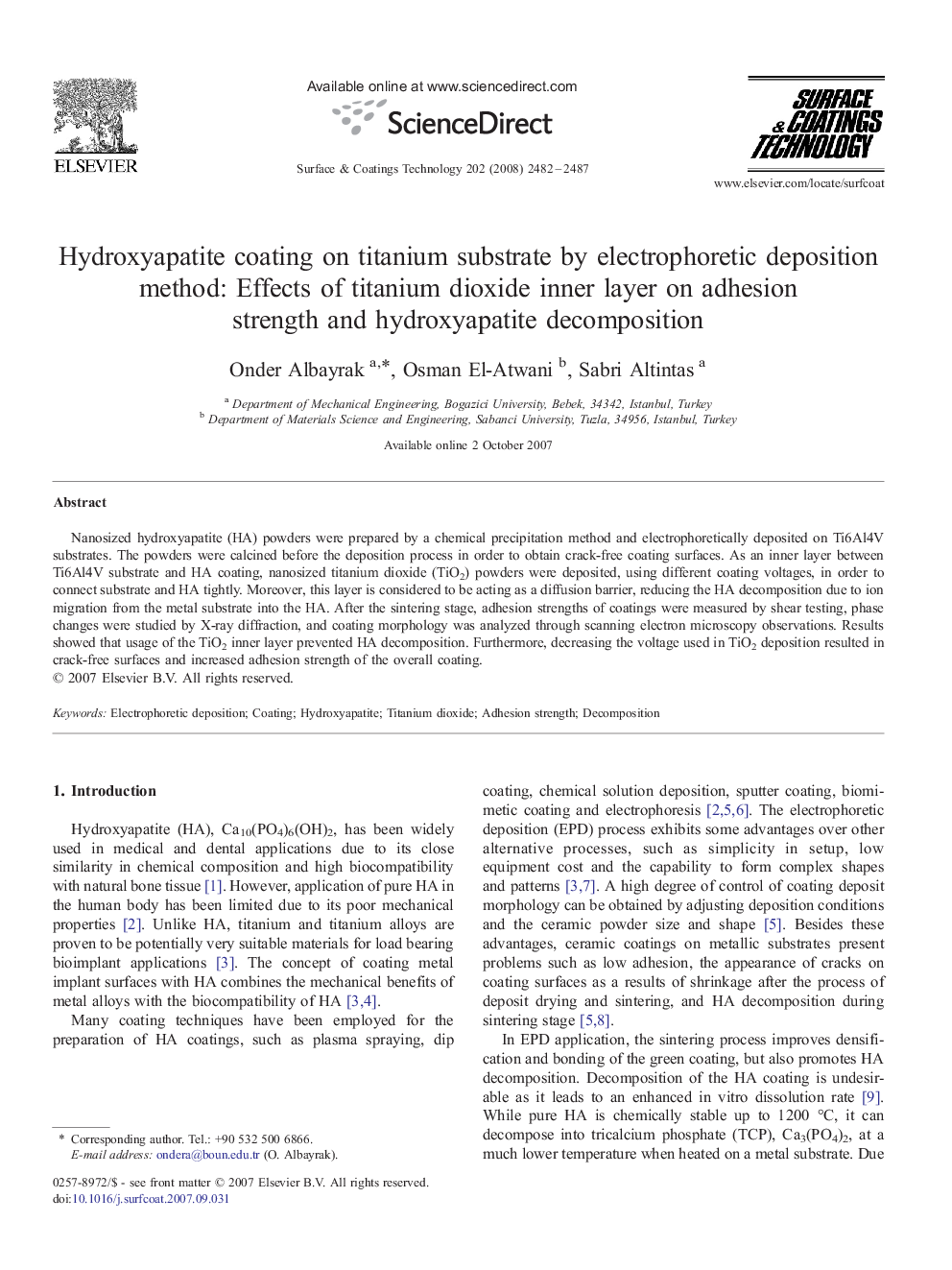| Article ID | Journal | Published Year | Pages | File Type |
|---|---|---|---|---|
| 1660535 | Surface and Coatings Technology | 2008 | 6 Pages |
Nanosized hydroxyapatite (HA) powders were prepared by a chemical precipitation method and electrophoretically deposited on Ti6Al4V substrates. The powders were calcined before the deposition process in order to obtain crack-free coating surfaces. As an inner layer between Ti6Al4V substrate and HA coating, nanosized titanium dioxide (TiO2) powders were deposited, using different coating voltages, in order to connect substrate and HA tightly. Moreover, this layer is considered to be acting as a diffusion barrier, reducing the HA decomposition due to ion migration from the metal substrate into the HA. After the sintering stage, adhesion strengths of coatings were measured by shear testing, phase changes were studied by X-ray diffraction, and coating morphology was analyzed through scanning electron microscopy observations. Results showed that usage of the TiO2 inner layer prevented HA decomposition. Furthermore, decreasing the voltage used in TiO2 deposition resulted in crack-free surfaces and increased adhesion strength of the overall coating.
